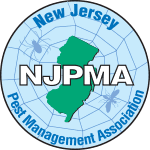SPOTTED LANTERNFLIES CONTROL

The spotted lanternfly (Lycorma Delicatula) is native to China. This pest was first detected in Pennsylvania in September 2014. These insects have spread not only throughout Pennsylvania but have also been found in New Jersey, Delaware, Maryland, Virginia, and New York since they can be spread long distances by people who move infested material or items containing egg masses. The adult spotted lanternfly is approximately 1” long and ½” wide at rest. Their forewings are grey with black spots and the tips are reticulated black blocks outlined in grey. Their hind wings have contrasting patches of red and black with a white band. They have blackheads and legs and their abdomens are yellow with broad black bands. Immature stages are black with white spots and develop red patches as they grow.
Not sure if you have a spotted lanternfly problem? Or maybe you want to learn more about how spotted lanternfly control works. Check out the following information to clarify some questions you may have.
Library Shortcuts
- Should I be concerned about Spotted Lanternflies?
- Signs of a Spotted Lanternfly infestation
- Why do I have Spotted Lanternflies?
- Tips to prevent and get rid of Spotted Lanternflies
Should I be concerned about Spotted Lanternflies?
Spotted lanternflies are not a threat to humans, they do not bite or sting, but they are a major destructive pest though. They feed primarily on trees of heaven (Ailanthus altissima) but can also feed on a wide variety of plants such as grapevine, hops, maple, walnut, fruit trees, and others; making them not only a threat to trees, but also to popular crops.
When lanternflies feed on these plants, they use their piercing mouthparts to suck sap from plants; reducing the plants’ available energy, potentially weakening them, and making them susceptible to diseases and even death. Besides; their feeding behavior causes them to excrete large amounts of honeydew, which stimulates the growth of a black mold on plants that attract other insects like wasps, hornets, or ants.
Needless to say; this destructive pest is a serious threat to the agricultural and tourism industries, it could seriously impact these industries in the country.
Signs of a Spotted Lanternfly infestation
Lanternflies are easy to identify, the black nymphs can be seen as early as April and until July. Red nymphs can be seen from July until September and adults begin to appear in July.
The following are some signs you can look for if you suspect you have a lanternfly infestation in your property:
- Dense clusters of insects on tree trunks and branches.
- Sap oozing or weeping from tiny open wounds on tree trunks that give off fermented odors.
- One-inch-long egg masses that are brownish-gray, waxy, and mud-like when new. Old egg masses are brown and scaly.
- Sticky “honeydew” with a distinct odor, which is excreted by the insects and may be covered in black “sooty” mold.

Why do I have Spotted Lanternflies?
Spotted lanternflies spread in several ways. Although spotted lanternflies do not fly long distances, they are hitchhikers. They can be easily spread to new locations when people accidentally transport eggs or other life stages into new areas. In the fall, spotted lanternflies start seeking out outdoor surfaces and lay mud-like egg masses on tree bark, outdoor gear, methods of transport, and more. They are known to rest on the outside of cars as well, which makes it easy for you to unknowingly spread them to new locations.
Tips to prevent and get rid of Spotted Lanternflies
As it was mentioned previously, spotted lanternflies can be transported unknowingly in different ways. The following are certain tips you can try in order to prevent this from happening or to control a small infestation:
- If you live or visit an area of the U.S. where spotted lanternflies have been found make sure to check any outdoor items (vehicles, outdoor furniture, children toys, boats, etc.) for egg masses before moving them. This will help prevent the spread of the pest.
- Killing spotted lanternflies when you see them is the most efficient way to get rid of them. The most proven way of killing a spotted lanternfly is to squish it, a quick stomp or a swift swat.
- Be on the lookout for spotted lanternfly egg masses during the winter and early spring. Look for brown, scab-like things on trees, fence posts, rocks, or really any flat surface outdoors. If you find an egg mass, it can be scraped off surfaces using a knife or a thin plastic card. The egg masses should be sealed in a plastic bag or placed directly into a hand sanitizer or alcohol to kill them before they are disposed of.
- It is strongly recommended, from mid-summer through early fall, to cut down high-risk host plants for the adult spotted lanternflies, like the tree of heaven. Other host plants like wild grape and oriental bittersweet should also be removed if possible.
- Turn trees that attract spotted lanternflies into traps by wrapping the trunk in a sticky band, which is usually sold in garden stores. Make sure to put a wire or mesh cage around the trap to prevent other animals from being affected. These traps are most effective when spotted lanternflies are still nymphs and haven’t grown wings yet.
Please remember that all sightings of spotted lanternflies; adults, nymphs, and egg masses should be reported to your local university extension or state plant regulatory official.
Want a Free Estimate?
Need to Schedule Service?
Have a Questions?
WHAT WILL WE DO?
Our spotted lanternfly control process typically consists of the following stages:
- Confirm or discard an infestation of spotted lanternflies in your home through an inspection.
- Identify the factors that may be causing and contributing to the infestation.
- Offer pest control programs to get the problem under control.
- Treat the affected areas to lower the lanternfly population.
What our clients are saying
Our Partners and Awards
Service Areas
New Jersey:
Ocean County
Essex County
Passaic County
Morris County
Hudson County
Bergen County









